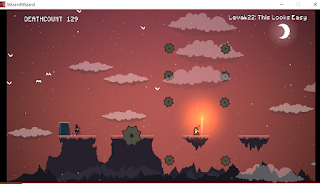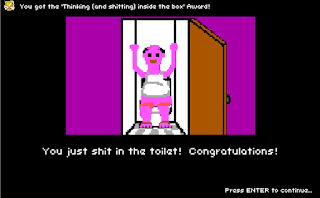 |
"This game is going places." Instagram: @pakjunho
Taken at Philz Coffee on Paseo de San Antonio an hour before class.
|
For my Intro to Game Studies class, we were recommended to bring a board game that wouldn't take relatively too long to play. Of the numerous board games I owned,
Splendor was by far one of the simplest to teach and had one of the shortest round times. If we were to play two full rounds of the game, I couldn't fathom bringing something like Agricola that would take several hours to explain all the quirky rules before even starting. Splendor is a lot like chess, it's simple and easy to teach, but there is a surprising amount of depth to it. My friend from church borrowed and after teaching her parents, who speak zero English, were playing every night.
Right before, I was hankering for some good Indian food and decided to hit up
Punjab Cafe on Santa Clara with two friends before class. One was in CS108 with me and another took the class last semester. We talked about association football (soccer for us Americans, though I insist on calling it football). We barely had time to eat our food and we raced to class and got in about 5 minutes late. Alas, all the good spots were taken. No worries, we were able to squeeze ourselves somewhere and I ended up standing for the majority of the time. That's okay, I'll burn more calories standing. I needed to lose some of the jiggle I accumulated in my time as a CS major.
We sat down and I began to explain the rules of the game. I started with the objective: You are a merchant and you want to get 15 points.
I worked backwards and told them the cards that have a white number on the top left will give you points. Like one of the jewel cards or the "noble" cards below:


The purchase prices for the jewel cards were the coins and their respective colors, so the black jewel card would cost 3 white, 3 blue, 5 green, and 3 red coins. The noble cards could only be purchased with cards and not coins. Something my friends kept forgetting. Without peppering them with too much strategy I let them know that the noble cards would be more of a long-term strategy.
The obvious segue to this information is, how do I get coins? So I moved to the next item was what they could do on their turns. First, if they have sufficient cards, they may purchase a noble. Second they have a number of choices:
- Grab 3 different coins
- Grab 2 of the same coin IF there is 4 or more in the pile
- Reserve a card and take the wildcard coin.
- Make a purchase of a card, either a reserved card or a card available to everyone in the front
 |
| Splendor Coins (White, Red, Green, Blue, Black, and WILDCARD |
I reminded them that they are merchants trying to prove their worth as the most savvy and cunning of them all. Accumulate wealth and buying power and you will win favor with the nobles. They have a market of jewels available to them but once you purchase a card, you can reuse that card as increased buying power. If you accumulate enough cards, some purchases may actually be free. Often times young merchants get carried away with purchasing free or cheap jewels that they forget that they are trying to impress the nobles.
The first round started and I was unafraid to claim the initiative. I quickly eyed some low cost jewels and deduced which coins to grab in order to purchase it first. My fellow merchants saw my move and attempted to emulate it. Perhaps they eyed the same card that I did, maybe not.
The second round came and I grabbed a few more coins. First I made sure I had the necessary 2 green and 1 red coin to purchase the jewel card I wanted, then I made sure to have a little bit of diversity in my coins.
The third turn came around and I made my first purchase. My fellow merchants had failed to come up with a contingent plan and was left wasting precious class time wondering what their next move was to be. Both of them settled for grabbing more coins.
I had surmised from glancing at the nobles that the nobles tended to value merchants who accumulated many white jewels and blue jewels. I made it my mission to quickly purchase the inexpensive white and blue jewels whenever possible. Alas my fellow merchants hadn't quite understood the endgame but they had certainly picked up on the idea of owning jewel cards made more purchases cheaper. Unfortunately one of the merchants fell into the trap of saving coins and buying a very expensive card at the beginning. I wanted to say something, but a mistake learned from is better so I held my tongue.
Before long I had 3 blue jewel cards and 2 white jewel cards. I had also accumulated 4 black jewel cards, 3 red jewel cards, and 2 green jewel cards. My fellow merchants were starting to realize that they did not have nowhere near enough blue cards to impress the nobles. They saw that the only way to block my success was to purchase white cards as soon as they could. However, fortune favored this merchant and I had amassed the necessary jewels to impress the nobles. Before long, I had acquired 4 nobles before my fellow merchants and had shown my cunning as a merchant.
 |
| The nobles saw my cunning for white and blue gems and awarded me |
My fellow merchants, envious of my victory declared that it was a fun time and would be willing to challenge me again in the future. For now, this merchant decided to play a quick game of chess with his friend Richard before heading off to his next class.
 |
| Tournament chess set with weighed pieces for blitz |
This game started off with a King's Indian that transposed to a Catalan Opening. Gibberish to the layman but a deep positional game to the avid chess player. Alas, my opponent bested me in the middle-game and I had to admit defeat. You win some you lose some.
 |
| Catalan Opening |





















